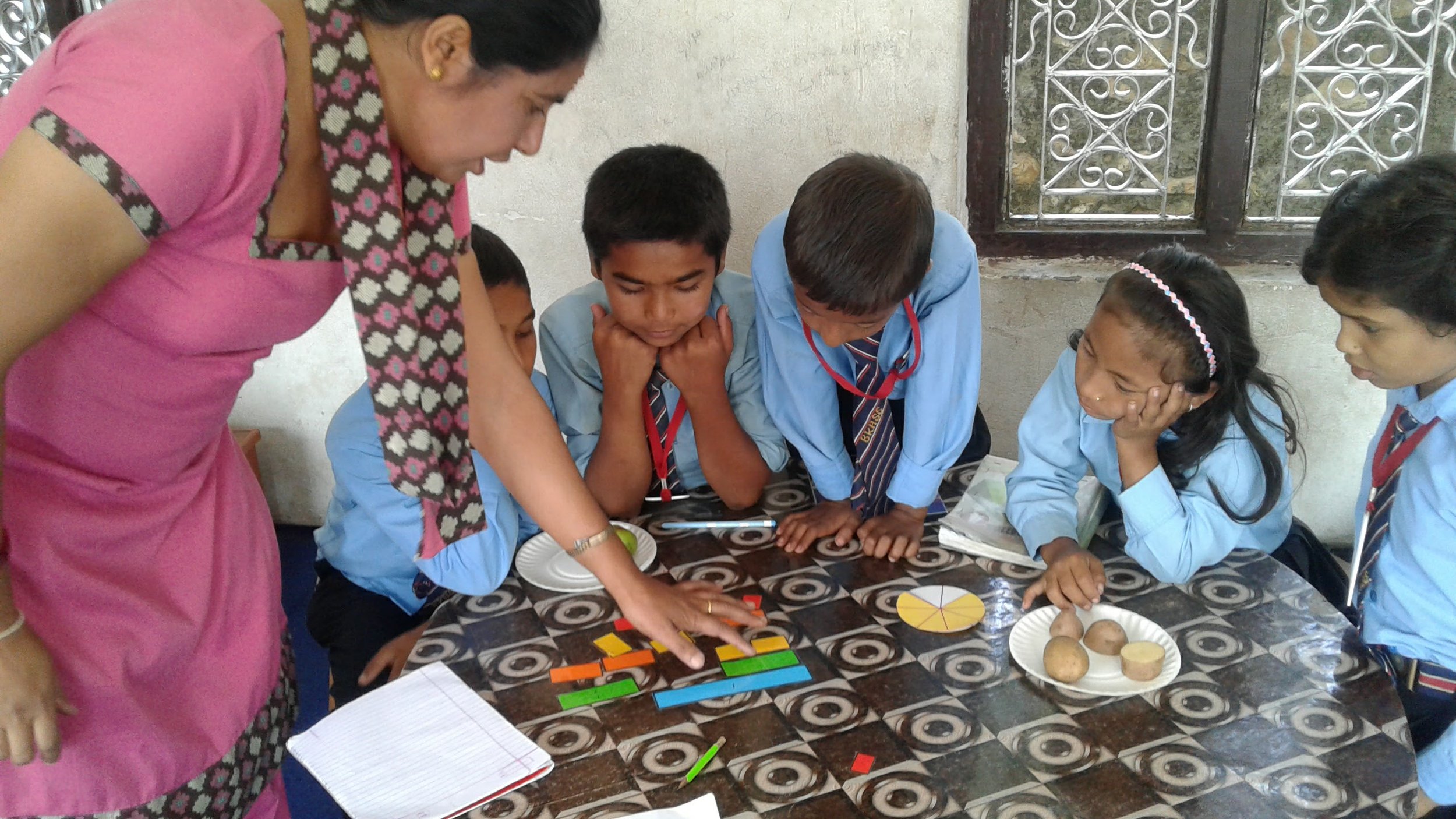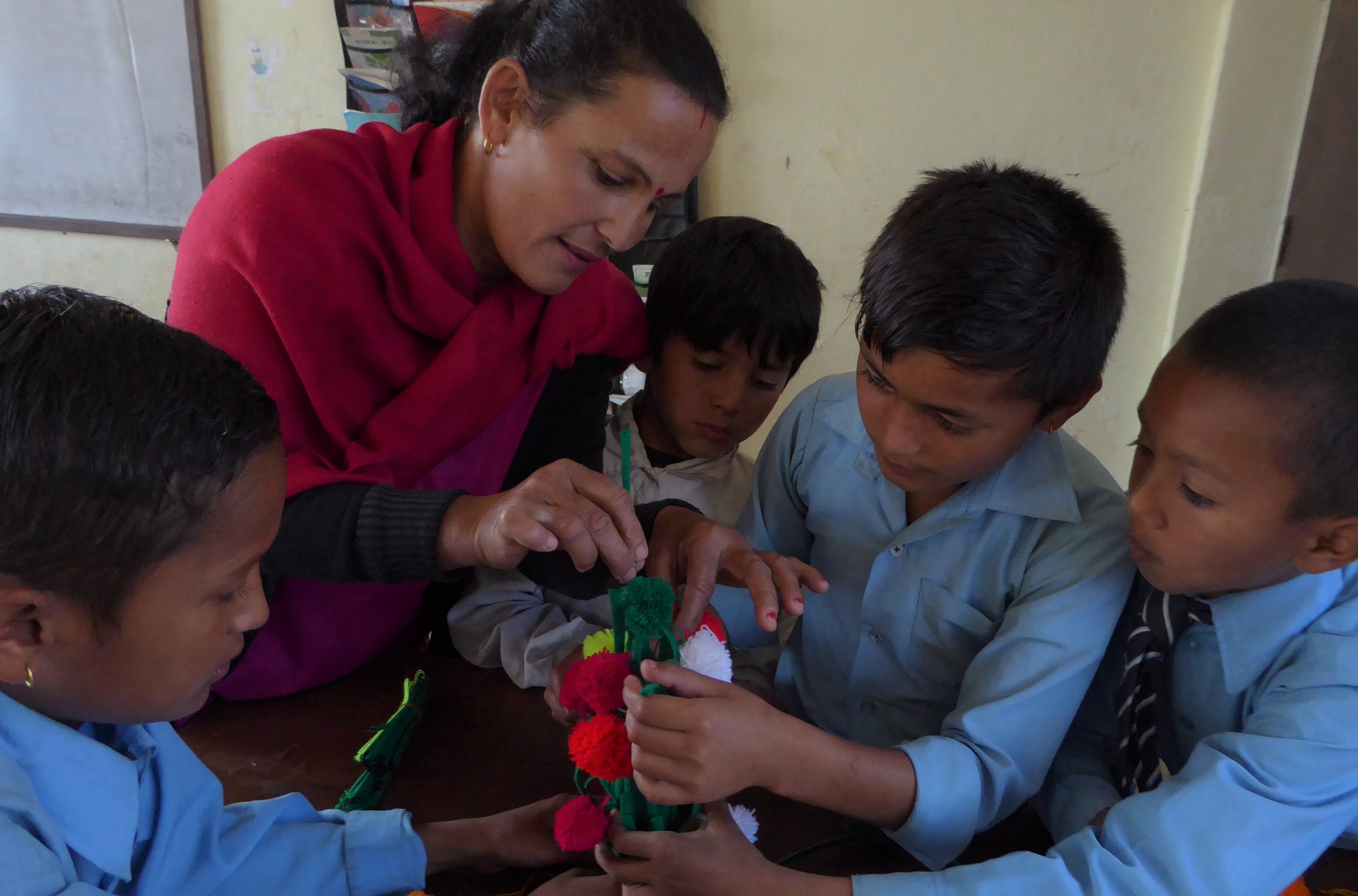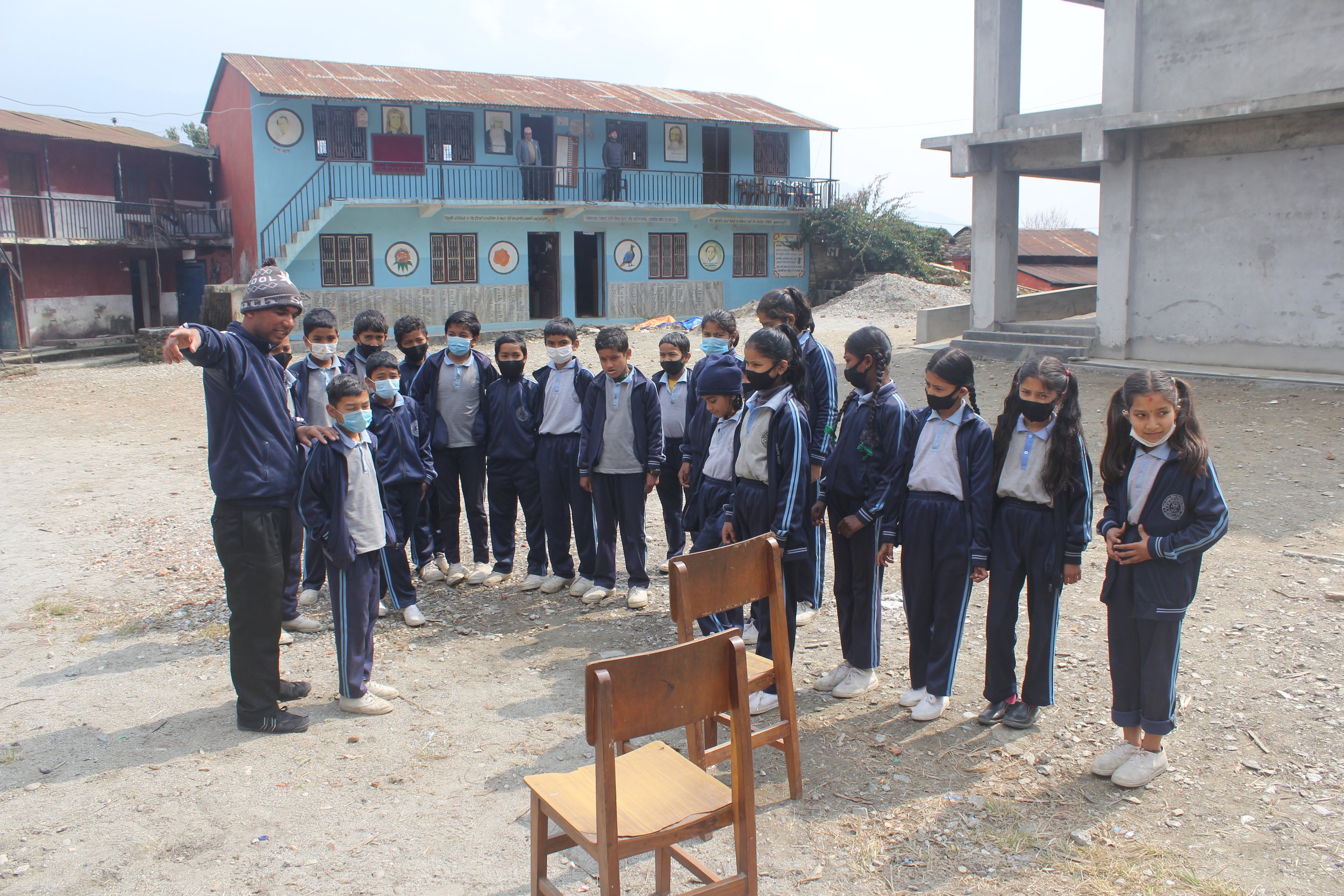In Nepal, there is a saying, "धावन्ति खेती घोकन्ति विद्या," that roughly translates to "you have to continually visit the field to farm well and continually memorize by rote to gain knowledge." This has historically been a positive message of diligence toward studying or farming to achieve good results. This guiding principle is deeply rooted in Nepal's education system.
Originally, learning was reserved for memorizing religious texts by the highest caste. Students would chant the words in a rhythm to make it easier to retain large amounts of information. They were even known to tie their hair to the wall in order to keep awake for long periods of time. Although, you will not see hair being tied to walls, this type of chanting is still quite common all over the country. Our teacher trainer, Phurba Tamang, remembers using this same technique of chanting during his schooling.
“I remember one of the most influential teachers in the community challenging us to memorize specific information. I stayed up all night to memorize the information. When the next morning arrived, he asked who had memorized the information. I confidently raised my hand. When he called on me, I stood up and my mind went blank. This was when I realized this form of learning has its limitations.”
Compulsory schooling is a newer concept in Nepal. In the 1950s, only 4% of school-aged children attended any form of schooling. The high caste students that did attend school mainly memorized religious books. Nepal has made tremendous strides in the last seventy years, yet the same deep-rooted ideas of learning remain.
Reform to the national curriculum has targetted a more integrated approach where skills and content knowledge can be more relevant to students’ daily lives. The task of adopting the new curriculum remains a huge hurdle as teachers have not yet been exposed to these ideas.
EQUIP sees a great need to train teachers to fully adopt this new curriculum. This requires understanding the context and changing underlying beliefs. Instead of seeing the textbook as the source of knowledge, but a jumping-off point to be co-creators of knowledge with their students. The task isn’t easy with the embedded ideas of learning but we do see glimpses of understanding as we train and support teachers in our partner schools.







